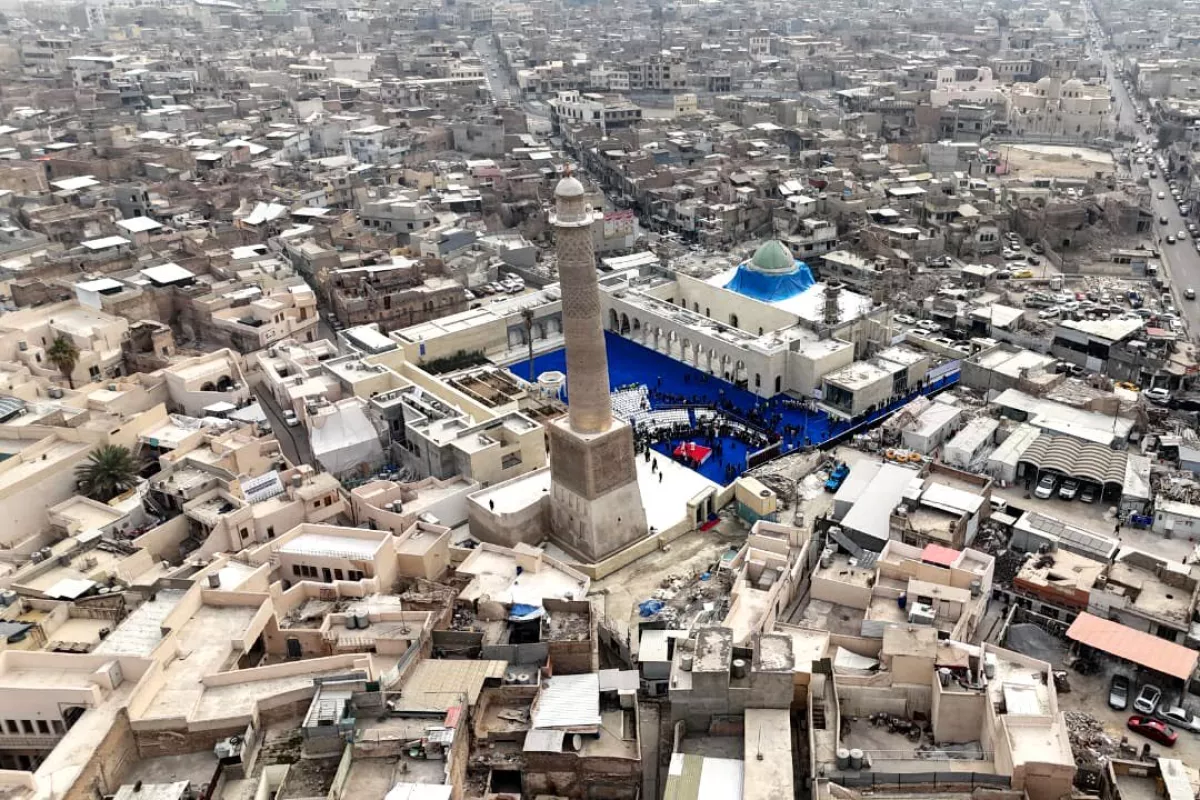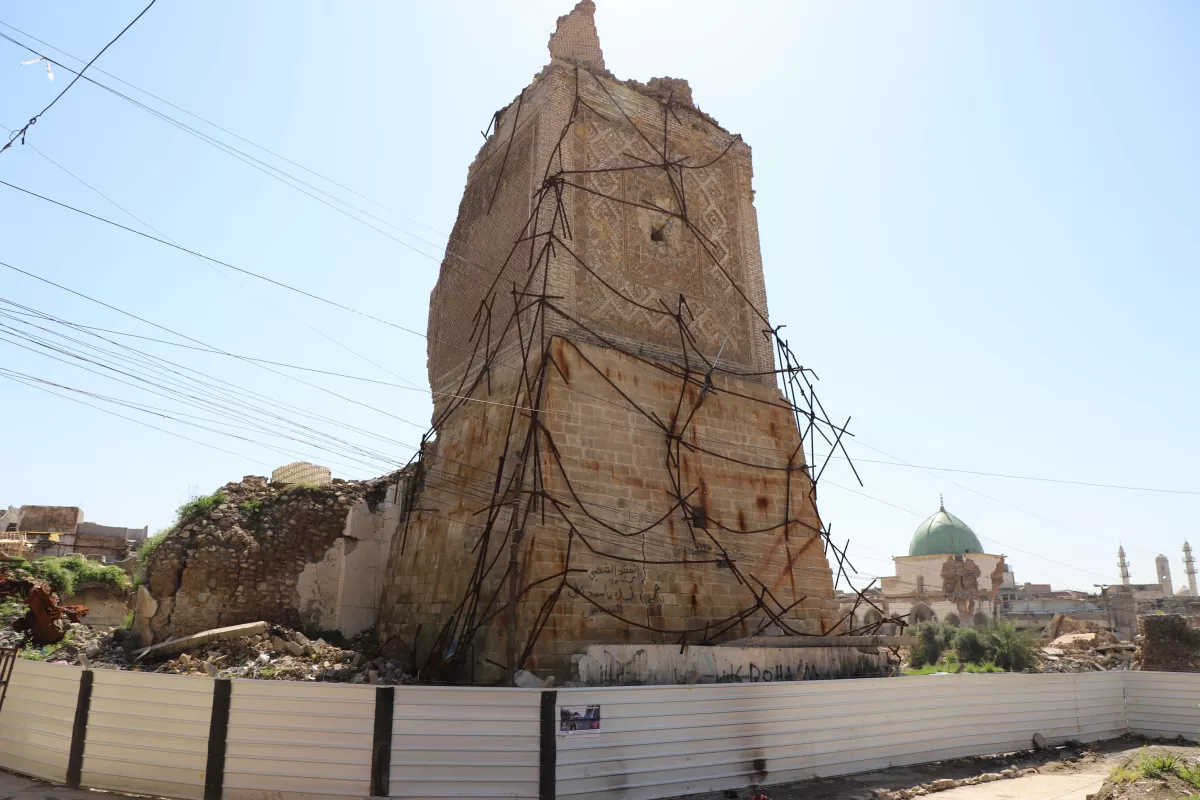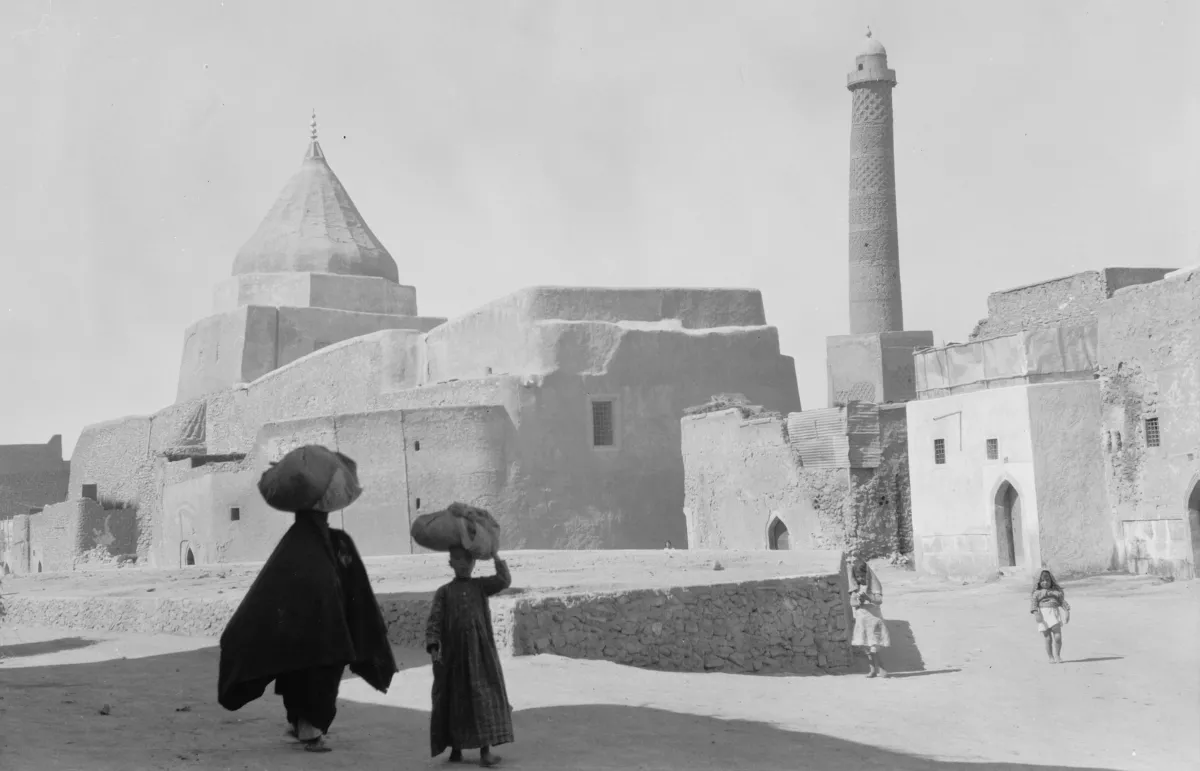Historic minaret, churches in Mosul rise from ruins of ISIS destruction
The leaning minaret of Al-Nuri Mosque, which stood as a historic landmark over the narrow streets of Mosul’s Old City for nearly 850 years before being destroyed by ISIS, has once again risen, symbolizing the city's resilience and enduring spirit. On February 5, UNESCO Director-General Audrey Azoulay visited Mosul to inspect the restored buildings at the end of the construction phase. The official inauguration, led by Iraqi Prime Minister Mohammed Shia Sudani, was scheduled for a later date.
Mosul, one of the hardest-hit cities, saw the ruin of numerous cultural and religious sites, the looting of museums and libraries, and the displacement of thousands. As The National publication points out, Mosul has embodied its Arabic name, meaning "Linking Point," serving as a crossroads between regions and cultures. The city has long been a symbol of Iraq’s diverse identity, where various ethnic, linguistic, and religious communities have coexisted.
In 2014, ISIS waged a campaign against Iraq’s cultural heritage, systematically demolishing historical monuments, mosques, churches, and libraries across Iraq and Syria. Northern Mesopotamia, once a thriving center of civilization and knowledge, suffered devastating losses, including the destruction of UNESCO-listed sites such as the ancient cities of Hatra and Nineveh. Yet by the time the Iraqi army liberated Mosul in 2017, more than 80% of the Old City had been destroyed, including over 130,000 homes.
Since 2018, UNESCO, in collaboration with the Iraqi government, the UAE, the EU, and other partners, has led the "Revive the Spirit of Mosul" initiative, aiming to restore the city's cultural and religious landmarks. The project includes the reconstruction of the Great Mosque of Al-Nuri, the Al-Hadba minaret, Al-Saa'a Convent, Al-Tahira Catholic Church, 124 historic homes, the Al Aghawat Mosque, and Al-Ekhlass School. More than €140 million has been invested in the restoration efforts.

The restoration of the "leaning" Al-Hadba minaret, a defining symbol of Mosul, was particularly complex. The tower which is part of the Al-Nuri Mosque, named after the Seljuk ruler Nureddin Al-Zinki, who commissioned its construction in 1172 following battles against the Crusaders and Shiite Fatimids, had stood for centuries as part of the city's identity, and its destruction was widely mourned.
In 2017, residents even formed a human chain to try to protect it. Ahead of reconstruction, a public survey was conducted, with 94% of respondents insisting that the minaret be rebuilt exactly as it was, with its distinctive tilt and intricate decorations. The decision was made to reconstruct it on its original base, using salvaged stones from the rubble. Today, the minaret stands once more, painstakingly reassembled.

According to UNESCO, the restoration efforts have created 6,000 jobs in Mosul, and over 1,300 young people have been trained in traditional skills such as carpentry, stonemasonry, and painting.
At Al-Tahira Church, 30 local workers were hired daily to assist in reconstruction. Project engineer Anas Zeyad Abdulmalek noted that residents often ask why places of worship are being rebuilt faster than homes and hospitals. His response: churches and mosques are “houses of peace” that “restore Mosul’s spirit.” He emphasized that rebuilding these religious sites revives shared heritage and fosters a sense of belonging.
Equally important, Abdulmalek highlighted the significance of Christian and Muslim communities working together on reconstruction, regardless of whether they were rebuilding a church or a mosque. "The project's main goal is to promote reconciliation and social unity in Mosul, where Christians, Jews, and Muslims have coexisted for centuries," he explained.

Al-Saa'a Convent, a key religious and cultural hub in central Mosul, was another major restoration project. Known for its distinctive bell tower—the first in Iraq—it was a gift from Empress Eugénie de Montijo, wife of Napoleon III, to the Dominican monks who ran the convent. The bell, installed in 1880, once chimed every hour, marking time for the city’s inhabitants. After ISIS looted and destroyed the convent, an extensive restoration plan was developed with local experts. Within 11 months, the convent was fully restored, complete with three new bells cast in a Normandy foundry in France.
Despite significant progress, Mosul's reconstruction is far from complete. Additional funding, labor, and time are required to fully restore the city's infrastructure. Plans include creating public spaces such as parks and plazas, as well as rebuilding the Ibn Sina Hospital, the largest medical facility in the region. While hospital reconstruction is still in the planning phase, Mosul International Airport is expected to reopen this year.
By Nazrin Sadigova








